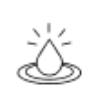If you’ve been on social media over the last few years, you’ve probably noticed that witchcraft has taken over the zeitgeist. Tarot cards, crystals, smudge bundles and sigils have popped up everywhere like magical mushrooms. Consulting psychics and using astrology apps has become commonplace. If you ask someone “what’s your sign” these days, you’re likely to hear not only their sun sign, but their moon and rising signs as well.
The overarching reasons for this widespread adoption of the occult aren’t clear, but it might have something to do with a growing sense that we are not OK as a society. Our institutions are failing us. Our leadership is inadequate at best. Our personal emotional needs and the needs of our families and communities often fall by the wayside in favor of the 9-5 grind and increasing economic pressures.
So we may turn to witches’ tools to remind us that we’re interconnected, that there are greater forces at work in our lives, that we’re part of the natural world, that magic and beauty are possible. Magic, myth, fairy tales and sorcery have always been a vital component of what it means to be human. And so has the role of the witch.

Back to the roots.
The word “witch” is over a thousand years old, and has the same root as “wisdom”. Historically speaking and worldwide, witches, shamans and folk magicians were the keepers of ancestral knowledge. They were leaders who provided spiritual guidance and healthcare from birth to death. They worked with plants and animals in order to feed and heal members of their communities. They mediated political disputes, initiated tribal leaders, and kept the secret mysteries of the spiritual lives of their people.
When hierarchical power structures began to take hold, colonialism swept the globe, and the church, centralized governments, and business interests began to exert control, healers and holy people were brutally persecuted.Their power could not be permitted to remain. And though real-life witches could be of any gender, the “witch” identity became associated with a dark, corrupting vision of femininity, to be contained, censored, and crushed.
Today, many people are pushing back against the vision of power that led to the destruction of the witches. Principles of gender liberation and racial and economic justice insist, with good cause, that the Guys In Charge should not actually be in charge of telling us how to live, since they’ve historically done a poor job of it for everyone but themselves. So it makes sense that witches are back – in a big way.
In 2020 and beyond, can witchcraft save us?
Though we’re huge if somewhat embarrassed fans of Tarot and astrology, we still have to say that crystals, meditation, and pretty pictures of altars – though wonderful things – aren’t nearly enough to cure what really ails us. But perhaps there’s a deep need for the role of the witch in our rapidly-changing society – the healer, the community leader, the steward of nature.
And if we’re called in that direction – and judging from our Instagram feeds, a joyous number of us are – there are many ways we can answer that call.
The following is a brief and far from exhaustive list of ways to practice “witchcraft” the way our ancestors did – no Tarot cards required – to help heal the world, and ourselves.

Run for office.
These days, the news is full of stories of regular people – bartenders, nurses, teachers, heavy metal guitarists, single moms and so on – pulling off shocking, even magical, electoral wins and ascending to positions of real power when nobody expected them to. The news treats these people as aberrations, since they’re not members of the “political class” as we understand it. However, these recent victories may represent a regression to the historical mean, when politicians and leaders were “regular folks” who knew what was best for their communities, and worked on their behalf.
Since we’ve been raised on media that treats national-level elections like a reality show, participation in politics may seem out of reach – but it really isn’t. If you’ve ever filled out a ballot and wondered who all those other people were – the city council, school board and Board of Trustees members, the assemblypersons and state representatives – consider the possibility that one of them could be you. If you see an unaddressed problem in your community, chances are your fellow citizens have noticed it too. Give them a chance to let you fix it.
Here’s a handy guide to get you started!

Join – or start – a mutual aid network.
Mutual aid networks are as old as humanity. We used to just call them “life”. But the COVID-19 pandemic has revived this method of community engagement and brought it to the forefront, with groups of friends and neighbors worldwide spontaneously organizing via email, Google docs and social media to share resources that our overtaxed institutions can’t.
So what’s a mutual aid network? It’s a group of people, usually fairly small and united by social ties and/or location, formally organizing to share skills and material resources. Mutual aid can take the form of food prep, childcare, education, emotional support – basically anything people do to build one another up. The goal is to nurture human connections and become well-resourced within the community, to foster resilience in the face of hardship and durable, mutually beneficial relationships when times are good.
Mutual aid is not charity, which implies the presence of a benefactor bestowing gifts. Instead, it emphasizes solidarity, communication, and interconnectedness – all very witchy virtues, long overdue to come back into fashion.

Care for the earth, even in the city.
Modern humans are, by and large, starved for nature. Even in exurban and rural areas, wild spaces are often contained and crushed by development, commercial agriculture and environmental degradation. And we’re so far removed from the plants and animals that feed us that it can be easy to forget dinner doesn’t really come from the supermarket or GrubHub.
There’s a strong argument to be made that removing ourselves from the natural environment and natural processes is very bad for our mental and physical health. Going hiking or camping (safely distanced, of course), planting a kitchen garden, or even just making time to sit under a tree and breathe can all be vital for self-care (with bonus pretty pictures for Instagram). But how can we play a leadership role in bringing the benefits of the natural world to our communities, like the hedge-witches of old?
The good news is that someone in your area probably already is. Community gardens have a long history of providing healthy food, social connections, and essential education to people who otherwise wouldn’t have access to those things, that are so necessary for physical and emotional wellbeing. And they often spring up in places that have been abused and neglected.
Community agriculture projects often need volunteers, and they’re easy to find via Google. If you’re volunteering to help a preexisting garden, be mindful of the specific needs of the community it was intended to serve, and listen closely to the leaders who are already there – in the spirit of mutual aid.

The witch in the world.
Every time a society-wide trend takes hold, it’s useful to look at the “why”s. And it certainly seems like the sudden popularity of pendulum-swinging and crystal ball-gazing reflects a deep hunger in all of us. Perhaps we want to believe in real-life magic, in the face of often-overwhelming uncertainty. Perhaps we yearn for a more authentic time, when human needs were honored instead of used as an excuse for commodification and exploitation.
If we define “magic” as “small actions making a big positive impact”, there’s good news – it’s real. Anyone can be a witch, even if they think Tarot cards are a load of hooey. And if we take a look around, we can easily see that a lot of people hunger for the same things we do – a life integrated with nature, meaningful connections, a better world. The ground is tilled for change.
It just takes a few witches to weave the spells.
Happy Samhain.
Want more? Sign up for our newsletter
By entering your email, you are agreeing to our terms and conditions and understand our privacy policy.









